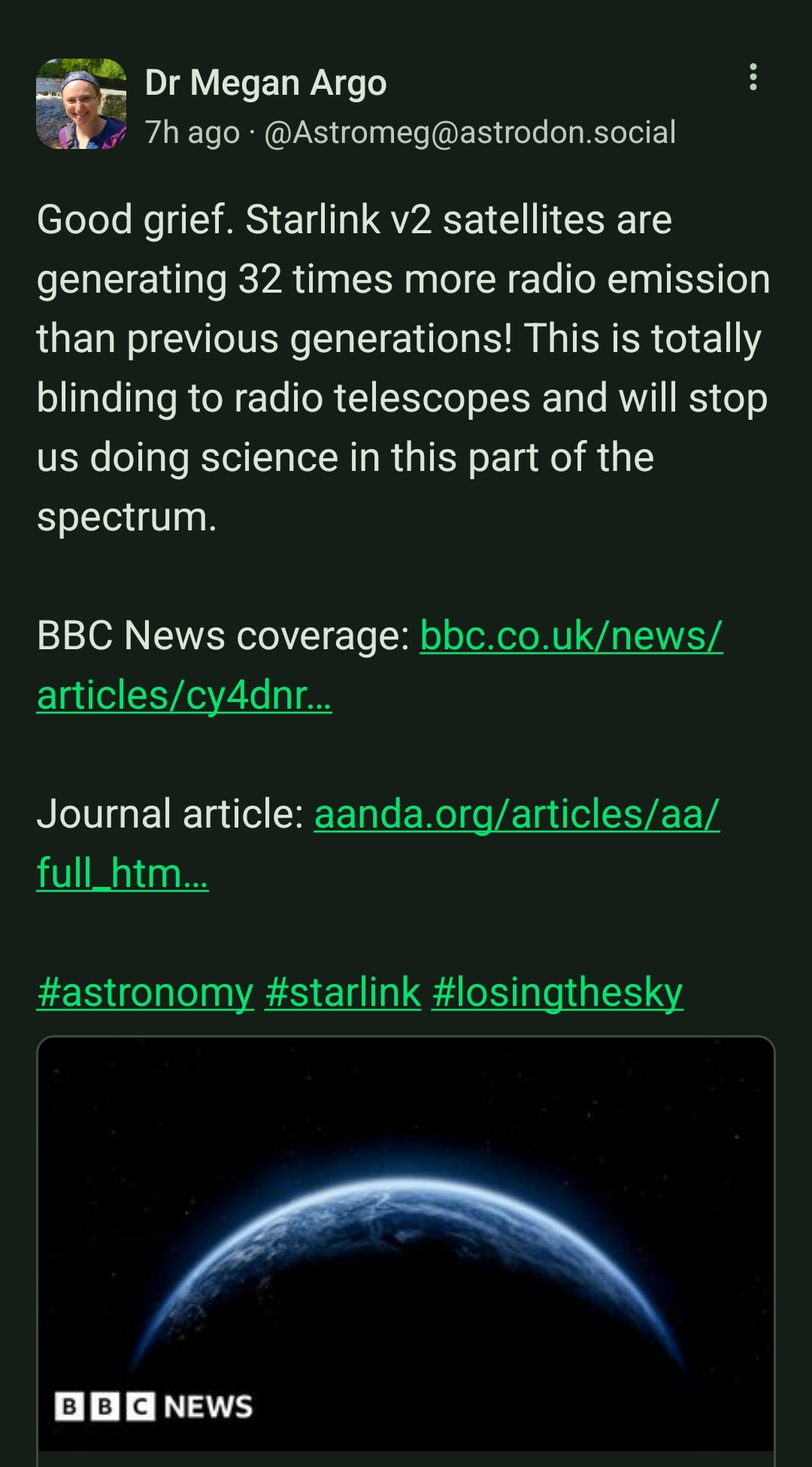this post was submitted on 18 Sep 2024
1216 points (97.5% liked)
Microblog Memes
5787 readers
2082 users here now
A place to share screenshots of Microblog posts, whether from Mastodon, tumblr, ~~Twitter~~ X, KBin, Threads or elsewhere.
Created as an evolution of White People Twitter and other tweet-capture subreddits.
Rules:
- Please put at least one word relevant to the post in the post title.
- Be nice.
- No advertising, brand promotion or guerilla marketing.
- Posters are encouraged to link to the toot or tweet etc in the description of posts.
Related communities:
founded 1 year ago
MODERATORS
you are viewing a single comment's thread
view the rest of the comments
view the rest of the comments

No, it isn't. The radio astronomy done in space is for Gamma rays, x-rays, UV and IR. Things the atmosphere blocks.
What's done on the ground is for much larger wavelengths (+1m) which, again, requires massive equipment that is currently is not feasible to send up.
The fix isn't to eliminate StarLink, I agree. The fix in my opinion is to have stricter controls from the ITU about how much interference a device can produce.
So which is it? It's already done in space, or that's the direction we should go?
Even your explanation about your original comment being "extremely easy to comprehend" has two opposing statements.
yes they do [and another]( https://en.m.wikipedia.org/wiki/HALCA And another, want a couple more…?
Than why is there already equipment up there doing that?
You don’t need large dishes, you use multiple in array like the ground based ones you linked….
Huh and would you look at that, the space based one is apparantly 4x the diameter of the largest one in your link on earth. How is that possible if it’s not “feasible” to launch stuff that large like you claimed…? They’ve launched larger apparently already?
Spektr-R | Decommissioned, single array, 10 meter diameter
From your link: "The very high angular resolving power was achieved in conjunction with a ground-based system of radio-telescopes and interferometrical methods, "
HALCA | Decommissioned, single array, 8 meter diameter
From your link: This orbit allowed imaging of celestial radio sources by the satellite in conjunction with an array of ground-based radio telescopes" ... "the project was eventually cancelled in 2011 due to increasing costs and the difficulties of achieving its science goals"
Orion | "It is believed that this refers to the diameter of the main antenna, which might be well in excess of 100 m", potentially you're correct! Oh. These are ground facing dishes that aren't use for scientific purposes and are highly classified.
Your point? You said it wasn’t feasible to do this in space, yet they already are and have larger sizes than on earth…. Also they’ve been doing this for decades and already decommissioned stuff and you claimed it was never done…? The hell…?
Your own earth based one you linked has even buddied with them as you so nicely quoted… so which is it? It’s not possible? Never been done? And you were making fun of MY comment? Lmfao.